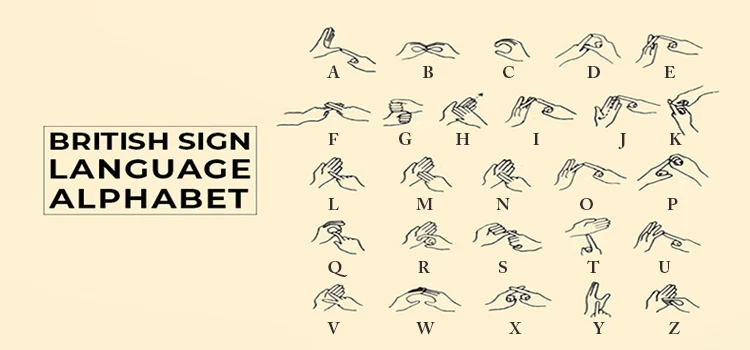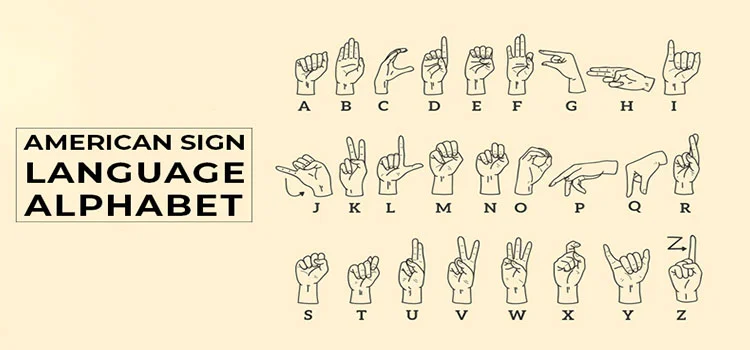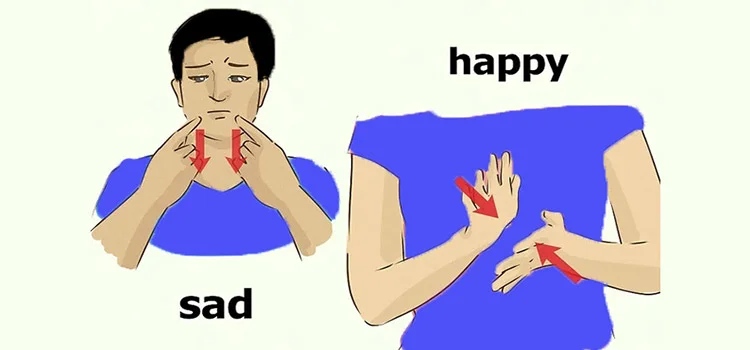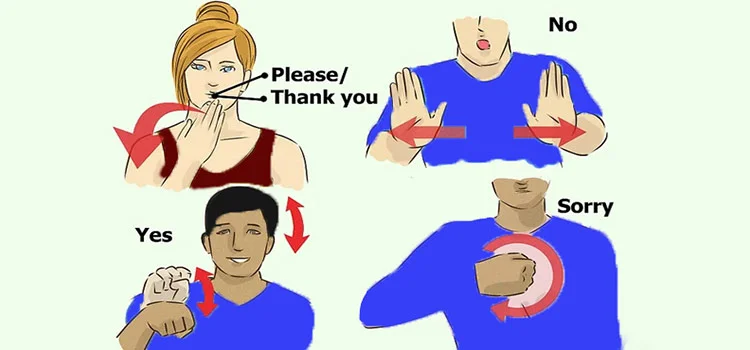BSL
Why is British Sign Language Important?
Are you curious about BSL? Are you wondering why BSL is important? Ever thought of learning this sign language? If you are keen to know this language but not sure about the benefits of learning it, then find out “why is British Sign Language important” from this blog and clear all of your doubts!
Table of Content
- What is Sign Language?
- What is BSL?
- Some Facts about BSL
- What is ASL?
- What’s the Difference Between ASL & BSL?
- Which Sign Language should you Learn ASL or BSL?
- Relationship of BSL with Other Sign Languages
- Why is BSL Important?
- Some Basic Signs of BSL
- Conclusion
- Frequently Asked Questions [FAQ]
- Is sign language a language?
- What is BSL sign language?
- What is ASL?
- Why is American Sign Language important?
- Why is sign language important in history?
- What are the 2 types of sign languages?
- Should I learn ASL or BSL?
- What is the difference between sign language and BSL?
- What is the most important sign language?
- How many BSL signs are there?
- What to Read Next:
What is Sign Language?
Sign Language is a visual means of communicating using hand gestures, facial expressions, and body language. Like any spoken language, sign languages have their own grammar and lexicon.
Different countries have different sign languages, so sign language too, has regional dialects. There are several Sign languages like American Sign language, British Sign language, Australian Sign language, New Zealand Sign language etc.
Though deaf people mainly use sign language, it is no longer confined within the deaf community only. Sign language is also used by hearing parents and teachers of deaf children, sign language interpreters, providers of deaf social services, and so on.

What is BSL?
The acronym BSL stands for “British Sign Language.” It is the most common and preferred sign language for the deaf community in the UK. As per disabled-world.com, It is the first language of approx. 150,000 deaf people in the British Isles.
The British Sign Language is itself a separate language. According to british-sign.co.uk, “After a big campaign, BSL was finally recognised by the UK government as an official minority language in 2003.” Like any other language, it has its own vocabulary, syntax and grammatical structure.
BSL involves a combination of facial expressions, hand gestures, upper body movements and lip patterns. It uses a two-handed alphabet, unlike ASL (American Sign Language). The British Sign Language is completely independent of the English Language.
Some Facts about BSL
- British Sign Language is a recognised language:
British Sign Language (BSL) has been a recognised language of the UK since March 2003. It has all the usual elements of language like grammar, lexicon and sentence structure. BSL is not a translation of spoken words, rather it’s a language itself.
- It’s the fourth most used language in the UK:
According to National Today, “Over 125,000 adults in the United Kingdom use British Sign Language, and many more know how to communicate with it — British Sign Language is the primary language of 15,000 individuals in England and Wales.”
- Lip patterns are a very important part of BSL:
Lip patterns are a significant part of BSL. The handshapes for some words might be similar but the lip patterns are different. For example, the signs for ‘uncle’, ‘aunt’, ‘nephew’ and ‘niece’ have the same hand movements for which it can get confusing. Under such circumstances, lip patterns should be observed.
- British Sign Language has regional dialects:
Just like spoken languages, BSL has regional dialects. For example, numbers and the days of the week have different signs in Manchester.
As per 121captions, “These regional differences come from the residential schools for the deaf in the 19th and 20th Centuries, where children and teachers would have their own unique signs. These children then grew up in that area, and so regions took on their own “accents”. So, it becomes difficult for a signer to understand the sign language of someone from another region of the country.
- British sign language is not universal:
The British Sign Language is not universal. This sign language is as varied as spoken languages. BSL is similar to Australian Sign language, but it is entirely different from American Sign Language (ASL).

British Sign Language Level 1 Online Course
- Accredited Courses
- Tutor Support Included
- 3 Installment Plan at checkout
- 14 Days Money Back Guarantee
What is ASL?
Like BSL, ASL or American Sign Language is another form of sign language used throughout the US and in some parts of Canada. ASL uses a one-handed alphabet like the French and Irish Sign languages. According to startasl.com, American Sign Language (ASL) is the natural language of around 500,000 deaf people in the US and Canada.
What’s the Difference Between ASL & BSL?
BSL and ASL both are sign languages, but there are differences between them. The most obvious difference is that while BSL uses a two-handed alphabet, ASL uses a single-handed alphabet.
The signing of alphabets and numbers in BSL is completely different from ASL. For example, in BSL, the letter ‘A’ is signed by touching the thumb of your non-dominant hand with the index finger of your dominant hand, whereas in ASL, ‘A’ is signed by making a fist with your palm facing out.
You can check out our other blog, “How to Learn British Sign Language Alphabet?”
Which Sign Language should you Learn ASL or BSL?
It actually depends on the person willing to learn the language. However, you should consider which sign language is used the most in the area you live in. If you live in the UK, you should learn BSL, and if you live in the US or in the English-speaking regions of Canada, you should go for ASL.
Relationship of BSL with Other Sign Languages
BSL is a part of BANZSL or British, Australian and New Zealand Sign Language. All of these sign languages were derived from the sign language that was used in 19th century Britain. There are considerable variations among these sign languages.
A BSL signer would not be able to understand an ASL signer since there exist differences between the two. Similarly, signers of the northern part of England may have difficulty understanding a signer from the southern part of England and vice versa.
Why is BSL Important?
There is a common belief that BSL is the language of the deaf community and can be used by them only. Whether you have hearing impairment or not, you can still learn BSL and use it for communication. BSL can serve various other purposes to hearing people as well. Some reasons why BSL is important are-
1. BSL acts as a Bridge between the Deaf and the Hearing people
People with hearing impairment can feel isolated if they cannot communicate spontaneously. As a society, our responsibility is to address this issue and encourage the widespread use of an effective means of communication that can be employed. Learning BSL can ensure equality among the hearing and the deaf community.
2. Strengthens the bond with the Deaf Community
If you love to make new friends, then there is a whole community of deaf people in the UK with whom you can be friends! Learning BSL would allow you to meet new people and build relationships.
3. Aids in Achieving a New Skill
Learning a new language means achieving a new skill. Imagine in a public place, someone with hearing loss or speech impairment is trying to say something using gestural language, but no one is able to understand the signs. In a scenario like this, your knowledge of BSL can help the person from unwanted embarrassment.
4. Helps to Communicate Better
You might be in a music concert trying to talk to your friend, but your friend might not understand anything because of the loud music. How can you communicate then? If you know BSL, you can easily convey your message to your friend through hand gestures. That’s why BSL is important.
BSL can also be used while talking from a distance or in a place where silence is preferred, like a library or a doctor’s chamber.
5. Allows to Boost your Career Path
If you are tired of your 9-5 job and thinking of switching to a new career, then you can opt for learning the British Sign language.
There are some specific situations where deaf people rely on BSL interpreters, for example, a medical emergency. In such a situation, interpreters can play a crucial role. According to uk.indeed.com, The average salary for a sign language interpreter is £17.82 per hour in United Kingdom.
The knowledge of BSL would also allow you to work as a communication support worker, teacher of the deaf, provider of deaf social services and so on. You can read our other blog, “What are the advantages of British Sign Language – 20 advantages of BSL!” to thoroughly grasp the positive outcomes of BSL.
Top Courses
Some Basic Signs of BSL
Here are some basic sign language vocabulary for you.
- Sign ‘Happy’
Use your working hand in a cupped shape to stroke twice across the supporting palm, moving towards the heel of the hand.
- Sign ‘Sad’
Use both the index fingers to point up at the sides of your lips and make a short downward motion.
- Sign ‘Help’
Keep your non-dominant hand flat (palm up).
Then, use your dominant hand to do a thumbs up on top.
- Sign ‘Please’
Place the fingertips of your dominant hand on your lips.
Then move the hand away from your face (same position).
Mouth ‘Please’ at the same time.
- Sign ‘Thank you’
Use the same sign as above.
Mouth ‘Thank you’ instead.
- Sign ‘Yes’
Make your hand into a fist.
Then rotate forwards.
- Sign ‘No’
Use both palms facing forward straight in front of your chest (arm straight out).
Then pull them apart with a sharp motion.
- Sign ‘Sorry’
Make your hand into a fist.
Rub against the centre of your chest in a circular motion.
Conclusion
Why is British Sign Language important? Sign language opens the door to connecting with people with hearing difficulties. If you are living in the UK, then learning BSL would be preferable since it is the most common sign language in the UK. Now that you know why BSL is important, you can opt for learning the signs!
Frequently Asked Questions [FAQ]
Is sign language a language?
Yes, of course, it is. Sign languages are visual languages. Their origin and development are just like any other natural spoken language.
What is BSL sign language?
BSL is a sign language that is predominantly used in Great Britain.
What is ASL?
ASL stands for American Sign Langauge.
Why is American Sign Language important?
Spoken English is just as important as French and vice versa. There is no comparison between languages. Any language is just as important as all other languages. Similarly, ASL isn’t any less or more important than any other sign language like BSL.
Why is sign language important in history?
Sign language has contributed in stopping discrimination against deaf people and helping the deaf become educated like their hearing contemporaries. This trend started in France and extended to the rest of the world. We would have missed many talents from helping us improve our civilisation without the help of these visual languages.
What are the 2 types of sign languages?
In fact, there are more than two types of sign languages in the modern world. According to the UN, there are 300 different sign languages today, and more than 80% of sign language users live in developing countries.
Should I learn ASL or BSL?
It depends on your use case. If you predominantly communicate with people who use BSL, then learn BSL and vice versa.
What is the difference between sign language and BSL?
BSL is a sign language. All sign languages (even special ones like Sign Supported English or SSE) are similar in the fact that they are visual languages. However, every sign language has its unique vocabulary, just like spoken languages do.
What is the most important sign language?
We’d again say that no “most important” sign language exists. Every language is equally important.
How many BSL signs are there?
This is difficult to say as sign languages are full-fledged natural languages, and they develop new vocabularies to communicate effectively almost on a daily basis. As a rough figure, BSL SignBank version 5.1 (updated mid-2014) has about 2500 signs.
However, like any other dictionary, it has its limitations, and the number isn’t remotely representative of the total volume of signs that BSL currently has.












